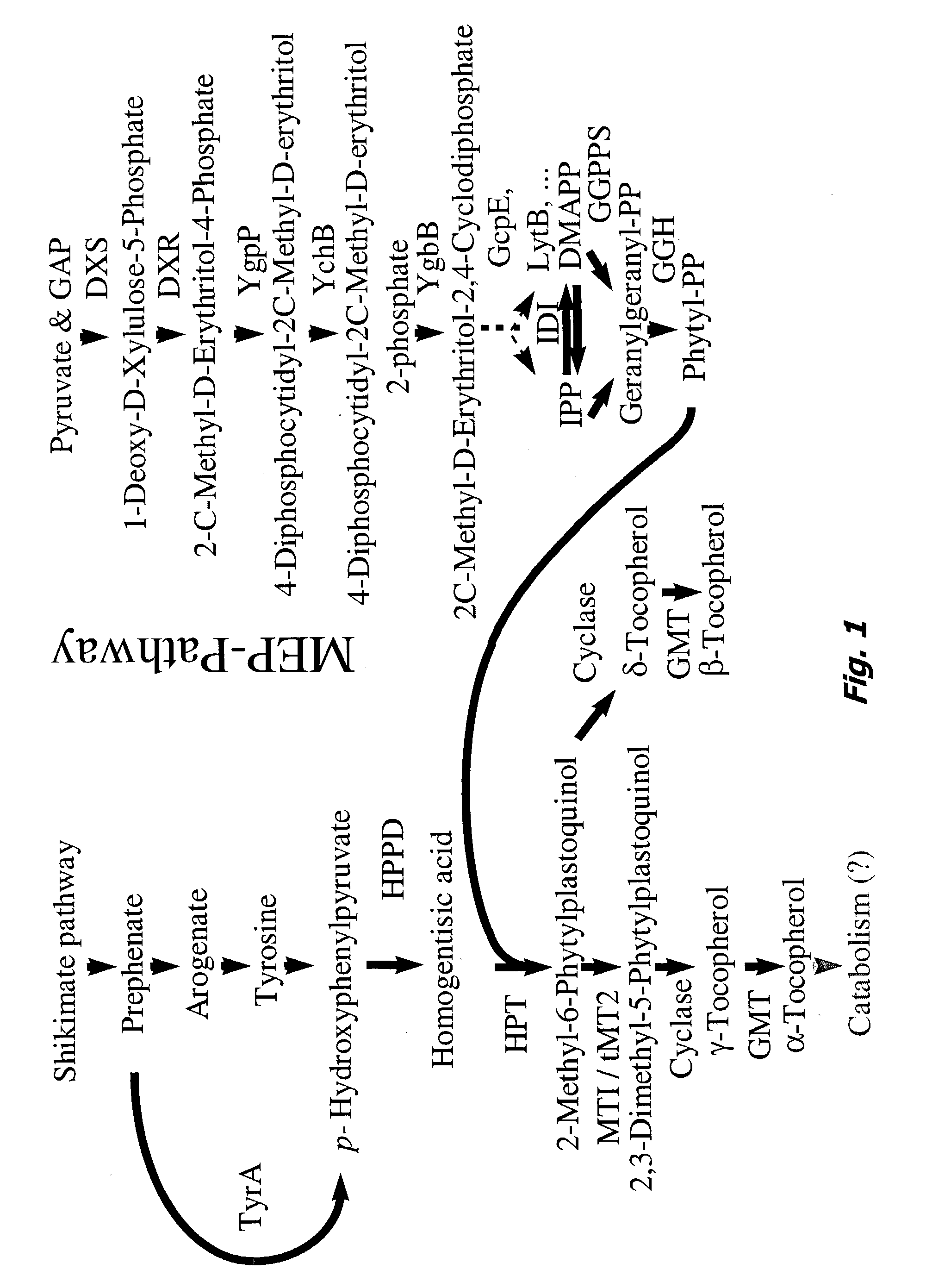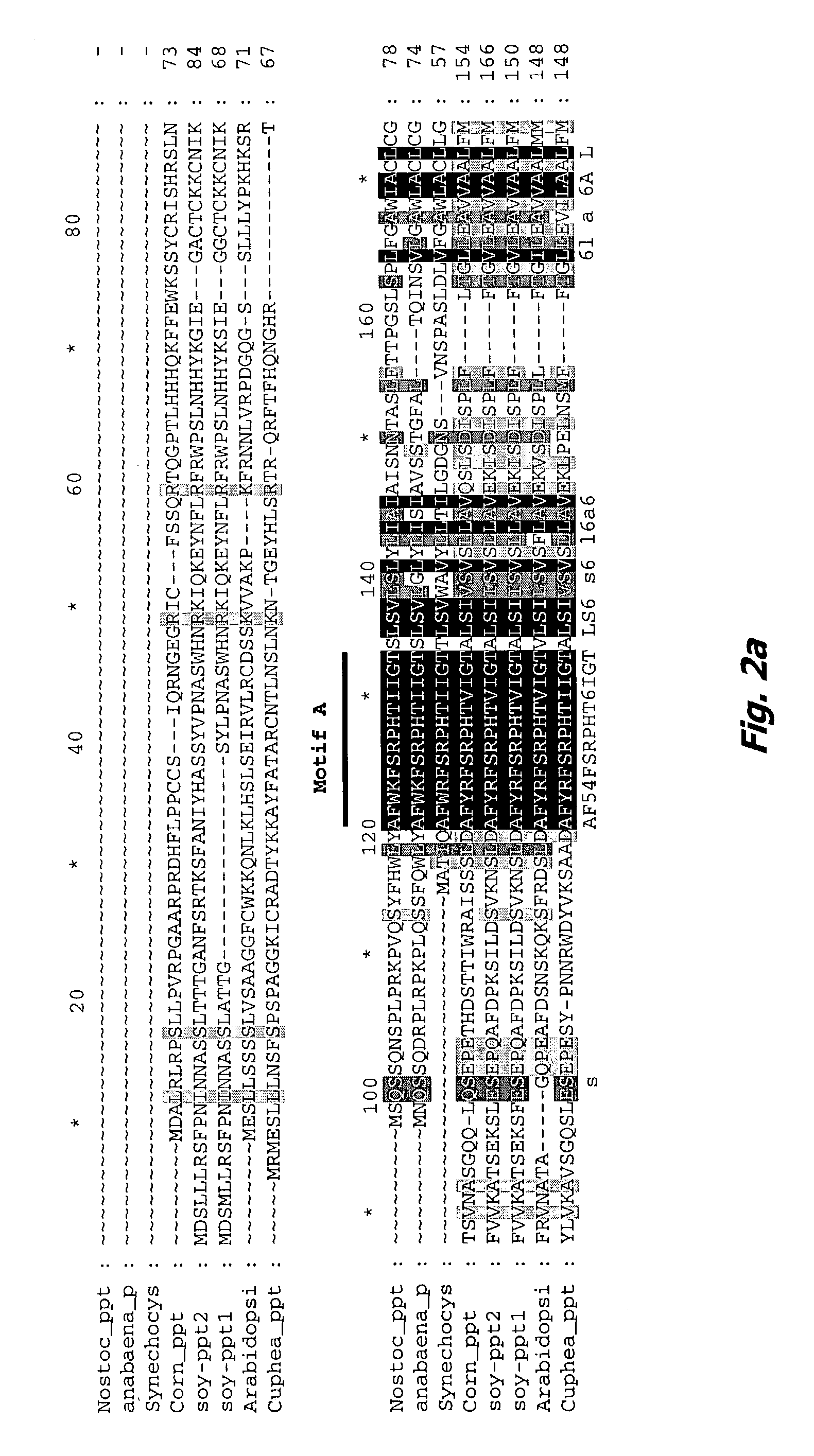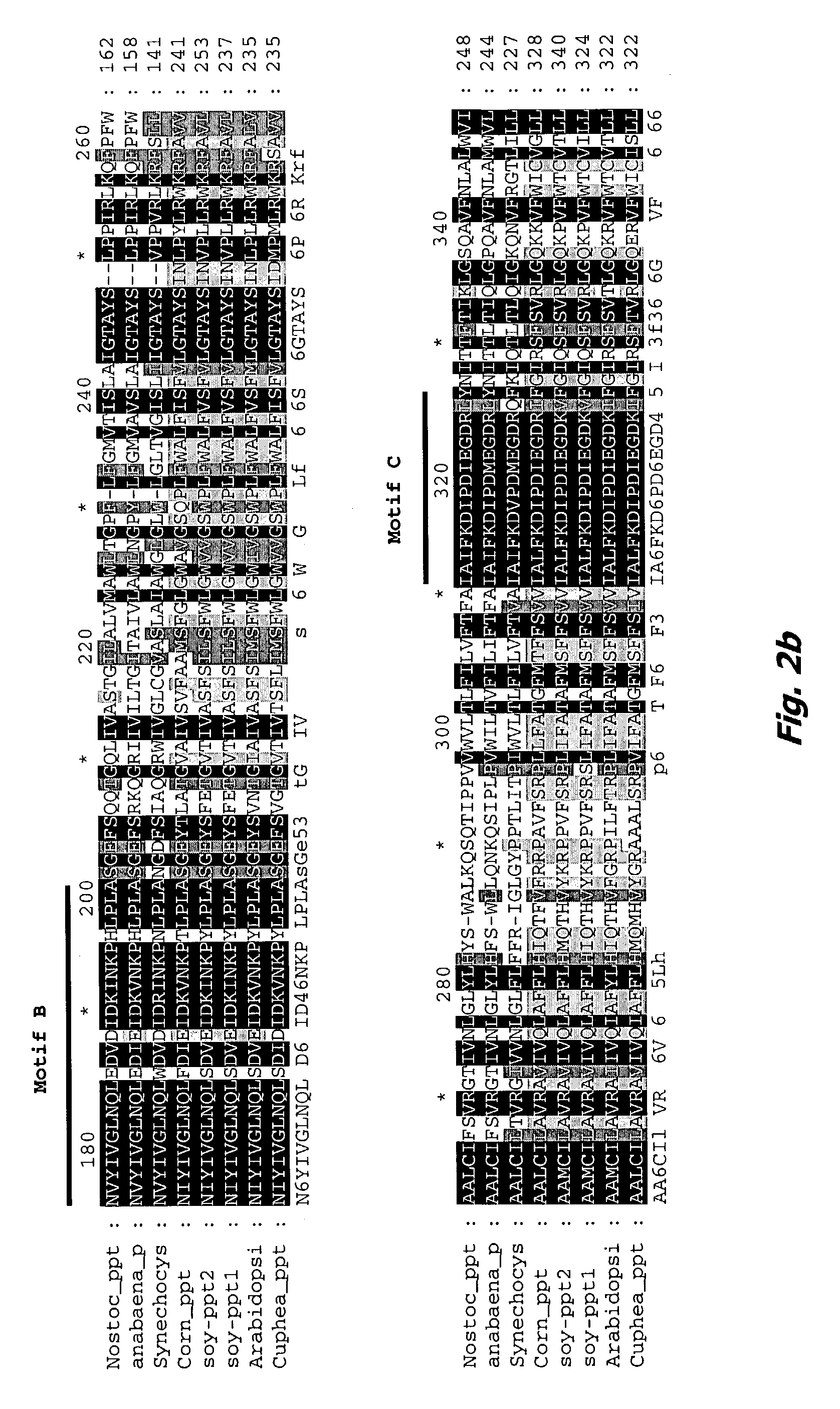Homogentisate prenyl transferase gene (HPT2) from arabidopsis and uses thereof
a technology of prenyl transferase and gene, which is applied in the field of homo, can solve the problems of relatively high cost of supplements and difficult to achieve the recommended daily intake of 15–30 mg of vitamin e from the average american di
- Summary
- Abstract
- Description
- Claims
- Application Information
AI Technical Summary
Benefits of technology
Problems solved by technology
Method used
Image
Examples
example 1
Identification of Homogentisate Prenyl Transferase Sequences
[0372]This example sets forth methods used to analyze homogentisate prenyl transferase sequences from various sources in order to identify motifs common to homogentisate prenyl transferase that are contained therein.
[0373]Homogentisate prenyl transferase sequences from Soy, Arabidopsis, Corn and Cuphea (partial) are cloned and sequenced from EST sequences found in an EST database. Synechocystis, Nostoc, and Anabaena are obtained from Genbank. These sequences (representing SEQ ID NOs: 1–8) are then aligned with respect to each other using the multiple alignment software ClustalX, which is described by Thompson et al., Nucleic Acids Research, 24:4876–4882 (1997). The multiple alignment of the protein sequences is visualized and edited using Genedoc, which is described by Nicholas et al., EMBNEW.NEWS, 4:14 (1997).
[0374]Using the aforementioned multiple alignment tool, four motifs (A–D) are identified, as shown in FIGS. 2a–2c, ...
example 2
Preparation of Expression Constructs
[0377]A plasmid containing the napin cassette derived from pCGN3223 (described in U.S. Pat. No. 5,639,790, the entirety of which is incorporated herein by reference) is modified to make it more useful for cloning large DNA fragments containing multiple restriction sites, and to allow the cloning of multiple napin fusion genes into plant binary transformation vectors. An adapter comprised of the self annealed oligonucleotide of sequence CGCGATTTAAATGGCGCGCCCTGCAGGCGGCCGCCTGCAGGGCGCGCCATTTAAA T (SEQ ID NO: 16) is ligated into the cloning vector pBC SK+ (Stratagene) after digestion with the restriction endonuclease BssHII to construct vector pCGN7765. Plasmids pCGN3223 and pCGN7765 are digested with NotI and ligated together. The resultant vector, pCGN7770, contains the pCGN7765 backbone with the napin seed specific expression cassette from pCGN3223.
[0378]The cloning cassette pCGN7787 comprises essentially the same regulatory elements as pCGN7770, wi...
example 3
Plant Transformation
[0398]Transgenic Brassica plants are obtained by Agrobacterium-mediated transformation as described by Radke et al., Theor. Appl. Genet., 75:685–694 (1988); Plant Cell Reports, 11:499–505 (1992). Transgenic Arabidopsis thaliana plants may be obtained by Agrobacterium-mediated transformation as described by Valverkens et al., Proc. Nat. Acad. Sci., 85:5536–5540 (1988), or as described by Bent et al., Science, 265:1856–1860 (1994), or Bechtold et al., C.R. Acad. Sci. Life Sciences, 316:1194–1199 (1993). Other plant species may be similarly transformed using related techniques.
[0399]Alternatively, microprojectile bombardment methods, such as described by Klein et al., Bio / Technology, 10:286–291 may also be used to obtain nuclear transformed plants.
PUM
| Property | Measurement | Unit |
|---|---|---|
| weight | aaaaa | aaaaa |
| temperature | aaaaa | aaaaa |
| temperature | aaaaa | aaaaa |
Abstract
Description
Claims
Application Information
 Login to View More
Login to View More - R&D
- Intellectual Property
- Life Sciences
- Materials
- Tech Scout
- Unparalleled Data Quality
- Higher Quality Content
- 60% Fewer Hallucinations
Browse by: Latest US Patents, China's latest patents, Technical Efficacy Thesaurus, Application Domain, Technology Topic, Popular Technical Reports.
© 2025 PatSnap. All rights reserved.Legal|Privacy policy|Modern Slavery Act Transparency Statement|Sitemap|About US| Contact US: help@patsnap.com



